Ease into Africa, or bid it gently farewell…
Twelve kilometres northwest of Victoria Falls – the world’s greatest curtain of falling water and a lure for travellers through the centuries – Toka Leya beckons. Nineteenth-century explorer David Livingstone and others, though marvelling at the Falls and surrounding landscape, suffered sickness and death. But today as a guest at Toka Leya, you can spoil yourself with creature comforts, thrill at the sight of local wildlife, see the Falls spectacularly but safely, cruise dreamily on the awe-inspiring Zambezi River, and meditate on its banks, watching the red sun drop into its slow-flowing waters.

Prepare for your safari deeper into the bush, or gather yourself, and your memories, before heading home.
That said, you can crank up the volume and – through the extremely welcoming and attentive Toka Leya staff – book any number of adrenalin-pumping local activities: get drenched walking, or swimming, under the Falls; go bungee jumping, white-water rafting, helicoptering, microlighting, or ziplining; walk with rhinos.

Or do it all…
Toka Leya – named after two indigenous tribes living on either side of the river, in Zambia and Zimbabwe – awaits. General Manager Chris Chiparaushe, former GM Petros Guwa, now Field Operations Manager for Wilderness Safaris Zambia, and Camp Manager Takudzwa ‘TK’ Gonese share what the camp has to offer…
What makes Toka Leya special? What are the activities/services offered at Toka Leya, and what are the highlights of a stay there, the aspects that guests really seem to love?
(Chris) Toka Leya is special because of its great location. It is situated in Mosi-oa-Tunya National Park, right on the banks of the mighty Zambezi River and only 12 kilometres from majestic Victoria Falls. It offers guests a peaceful, relaxing safari-style environment and also a convenient base to partake in the many adventure activities around the Falls.
There are activities galore at Toka Leya. These include game drives in the national park; boat cruises on the Zambezi; catch-and-release fishing; village tours; tours of the Falls; the Toka Leya back of house tour; visits to nearby Livingstone town, including a museum and local market; and the rhino walk. All are guided by our experienced and friendly Toka Leya guides.

If you’re feeling even more adventurous, our staff can book the following activities for you: white water rafting; bungee jumping; ziplining; the gorge swing; a helicopter flight over the Falls or swimming under them; and microlighting.
The rhino walk is a highlight for many guests. This is the only surviving population of white rhino in Zambia. Most guests will have seen the ‘Big Four’ on safari and complete the ‘Big Five’ when they come to Toka Leya and see rhinos, which pleases them a lot. I have also found that many guests enjoy the village trip, as it is a completely different experience in which they interact with the local community. They love the school and make many friends. Our back of house tour is also a winner. Here guests get to appreciate the way we look after the environment through our environmental waste management system and how we channel the organic waste from our kitchen to the worm farm to create compost for the trees that we grow for our reforestation project.

(Petros) Toka Leya makes an easy entry and exit point for guests either coming to start their safari or those ending their safari in southern Africa – a luxurious retreat before jumping into a busy safari schedule or, that completed, taking a long-haul flight home. While the Toka Leya game experience compares well with that of most other safari destinations – offering three of the Big Five – Toka Leya is also an ideal destination for relaxing and participating in various activities more at your leisure. Arriving in Africa or about to leave, guests really appreciate this flexibility.
(TK) A lot about Toka Leya is special. Its staff, who make guests feel like they have arrived at their home away from home. Its location is second to none, a little piece of heaven on Earth. There are many ‘wows’ for guests in different locations around camp, for instance dinners under the moonlight, wine tasting on the beach sand, or a simple surprise breakfast on an island. Toka Leya offers an array of activities and services that guests really love, such as walking and interacting with rhinos, planting trees, and learning about the environment and how Wilderness Safaris plays its part in conservation.

What do YOU most love about Toka Leya?
(Petros) I love that Toka Leya gives the feeling of being on an African safari but also provides guests with all the luxuries offered by some of the big hotels. The camp is small enough for staff to give guests personalised service; in most cases, when guests depart, they feel like family. The camp’s size, design, and team complement each other so well and create this homey environment.
(TK) What I love most about Toka Leya is its family culture, both for guests and fellow colleagues. A few days will not pass by without guest feedback mentioning how comfortable they are with camp staff. Also, the staff are united and will help each other even outside of the workplace.
(Chris) I love the way the staff connects with the guests and how most staff members and guests become friends by the time guests leave. The camp is beautiful and well-appointed, with lots of activities, but most guests say that it is the people that make Toka Leya such a wonderful experience for them. Some guest comments attest to that:
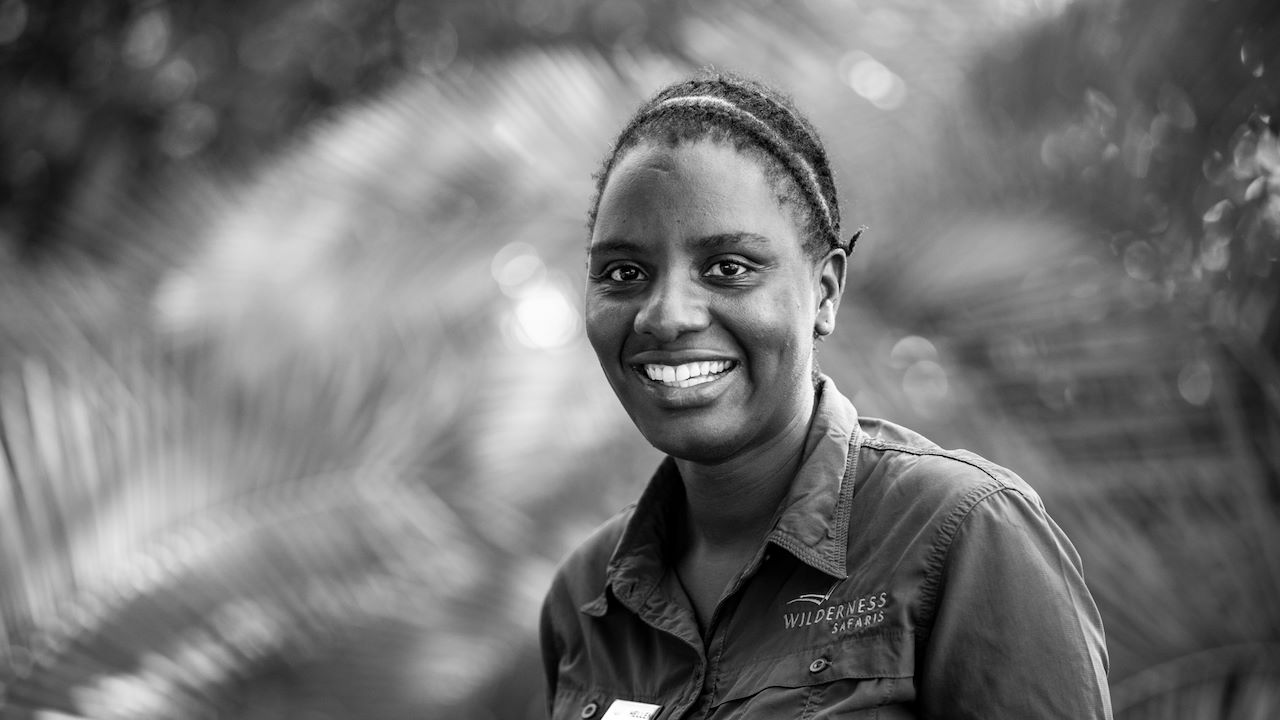
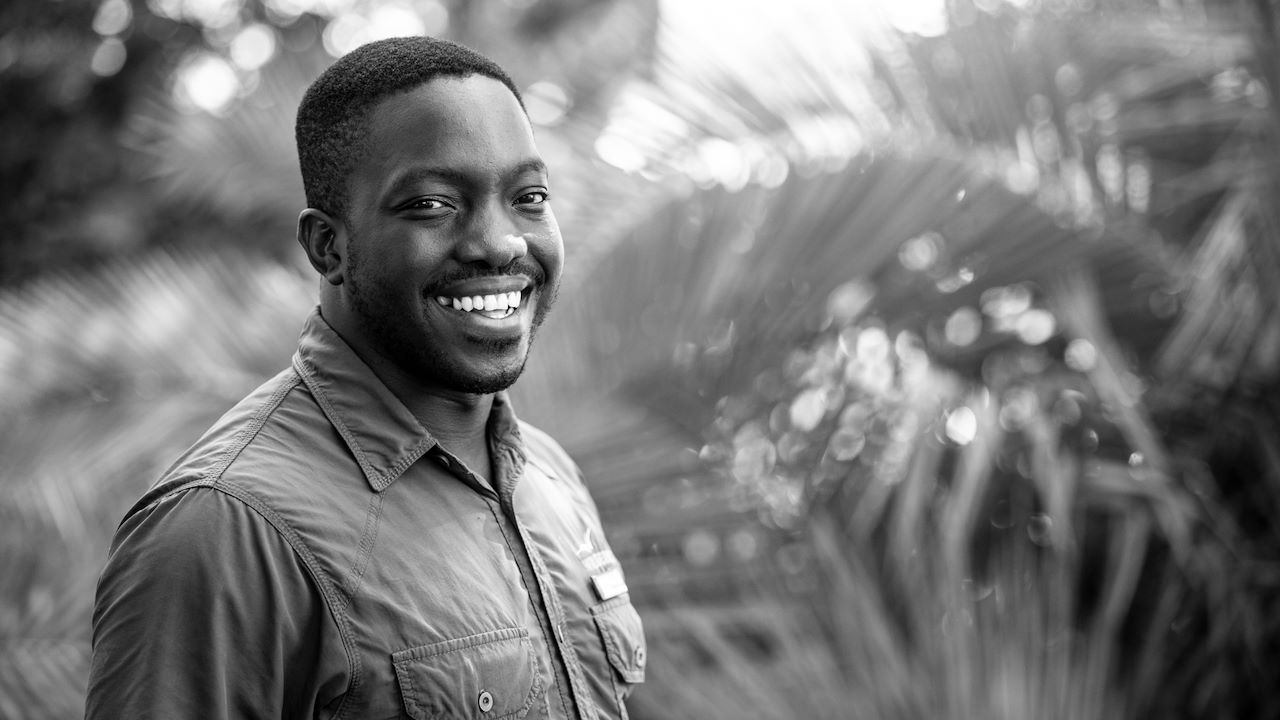


A great end to several weeks in Africa. We appreciated the facilities, the food, but the staff most of all. Very caring and accommodating. God’s blessings upon you.
Loved the personal service – the use of our first names by all of your staff was great…
Amazing experience! Wildlife great but staff even better! Fantastic customer service. Thanks for the memories.
Fabulous time – great, friendly, helpful staff. Happy staff make for a happy journey…
Please talk about the wildlife at/around the camp. What are the most sought-after ‘wow’ sightings and what have been some of the more incredible wildlife encounters?
(Petros) Toka Leya is in the heart of the Mosi-oa-Tunya National Park, in an area that many species of game frequent. We regularly have animals ‘in residence’ – who hang around camp for periods of time. Like the white rhinos, who are drawn to the big, open grasslands to the west of the camp – but also visit camp itself. We usually have a few days each month when the rhinos come through camp and are sighted in the nearby open area, great for grazing. We’ve also had a young buffalo who became a camp resident and literally stayed among our staff. Prior to that, we had the famous hippo (Moto Moto) who also found refuge in the camp and stayed with us for years. His favourite sleeping sites were just outside our office or at the beach in front of the camp.

Moto Moto became such a feature that not seeing him for even a day had the staff worried and searching for him. Obviously, as he grew, he moved on and probably found himself a family. In the same period we also had the company of a young elephant who had been injured in a wire snare. After the vets removed the snare and treated him, he decided to hang around camp for a few months until the parks department relocated him to another area of the park. These animals become such a part of the camp – there is always some species staying in camp and you feel they are part of the team.
(Chris) The resident wildlife in camp includes healthy populations of bushbuck, warthog, and monkey. Hippos come out and graze on the camp grounds every night, and impala are daily visitors. Other frequent visitors include baboon, giraffe, and zebra. Elephants in camp are always a highlight, and everything comes to a standstill when they arrive.

(TK) During the rainy season in 2017 – my first few months at camp – I was fortunate enough to find a baby hippo (about one day old) with its mom. On my way to work from my room on site, I knew there was a resident hippo that usually hung around in a small lagoon just underneath the walkway between tents one and four, so I was always careful. At first I saw Mommy hippo lying on her side in the water and to my surprise there was a foreign pink object bobbing up and down, in and out of the water. As I got closer I could make out that it was a baby hippo. I was shocked and surprised all at the same time. I soon snapped out of that state, as Mommy quickly got up once she saw me reaching for my phone to take a few photos. I wanted to capture the scene for others – I didn’t think they’d believe me. I moved quickly away and so did they. Luckily, though, most of the guests staying with us during that period managed to see Mommy and baby, as they used Toka Leya as their safe haven.

What are some of the key bird species that guests can expect to see?
(Petros) Birding is really great at Toka Leya, especially during the summer months when we have all the migrants around. Being on the river, Toka Leya is a place to see most of the water birds. One of the most special is the African skimmer, often seen nesting on the islands during a river cruise – it’s Wilderness Safaris’ logo.

(Chris) African skimmer; Pel’s fishing owl; narina trogon; African finfoot; red- eyed bulbul; half-collared kingfisher; and pink-backed pelican.
(TK) The most talked about birds which guests can expect to see at Toka Leya, in my opinion, are the goliath heron and the rare African finfoot. We also have a variety of kingfishers which are common residents in the area.

How does the Toka Leya experience compare to/differ from that of other Wilderness Safaris camps in Zambia? Would you recommend that guests visit Toka Leya plus other Wilderness camps?
(TK) As I always mention, Toka Leya is uniquely situated as guests get to experience both the African bush with its wildlife, and the town, village, culture and heritage of Zambia. You will not experience that with any other camp in Zambia. However, I can recommend and vouch for each individual Wilderness Safaris camp as they all carry their own distinct characteristics and styles. When recommending, you have to consider the times of year to travel – this impacts on what camps you recommend and when.

(Chris) Toka Leya offers that important transition for guests arriving or departing from Africa, and is a must for guests going to other Wilderness Safaris camps in Zambia in the Kafue National Park. Toka Leya is also the first-choice base from which to explore the iconic Victoria Falls. One cannot come to southern Africa and not see this wonder. Toka Leya can be combined with the other Wilderness Safaris camps in Botswana, Zimbabwe, and Namibia, all offering diverse experiences. All our guests are pleasantly surprised at the number of things to do at Toka Leya, and always wish they could have stayed longer than the normal two nights that most guests stay. The camp is also a wonderful stand-alone destination, especially for regional guests.

(Petros) Toka Leya is a tented camp like the other two Wilderness Safaris camps in Zambia – Shumba and Busanga Bush Camp, both in Kafue – but on a higher level of luxury, on par with five-star hotels. Our dining and wine experience is of a very high standard. Activities at Toka Leya are not as programmed as those in our Kafue bush camps, where you have an early start, return for brunch, followed by an afternoon activity and getting back late for dinner. At Toka Leya the emphasis is on guests’ relaxation and enjoyment of the camp facilities. Activities are tailored to suit guests’ needs and timings. Our bush camps do not have some of the Toka Leya extras, such as the gym, spa, and bar fridges. Both our bush camps and Toka Leya offer river activities, but the Kafue camps’ boat cruises are determined by the Lufupa River levels – when the river is too low, the river activities stop. At Toka Leya, though, they happen year round. Toka Leya also offers cultural tours and a wide selection of third-party activities (eg. bungee jumping, white-water rafting and so on) not offered by the other WS Zambian camps.

Toka Leya combines very well with the Wilderness Safaris camps not only in Zambia, but also with those in Zimbabwe, Botswana, and Namibia. From Toka Leya, guests can fly an hour and 15 minutes to Kafue and the Busanga Plains, where they will have a completely different safari experience in a big game area – the big cats being the highlight. Guests there can also enjoy hot-air ballooning, from August onwards. While the experience at Toka Leya is generally more laid-back and slow-paced, with the emphasis being on relaxation, the river, and the Falls, Kafue and camps even further afield will then give guests the big game experience and the feeling of being close to nature, further into the wild. Definitely makes the circuit complete.
What’s your favourite time of day in/around camp and why?
(TK) My favourite time of the day in camp is the morning, particularly morning meeting time. We all get to plan and share ideas for our day accordingly. I also enjoy nighttime when guests have gone to sleep with full stomachs and peace of mind – then I know that the day has gone smoothly.

(Petros) During my years at Toka Leya as the general manager, sunset was my favourite time of day there, particularly sunset at the bar. The bar has been set up totally with guests in mind. Often a bar will have the guests’ backs to the river and the bartender facing it; not at Toka Leya. There guests can watch the sun set over the Zambezi, taking in all the reflections and colours of the river and sky while sipping a gin and tonic or a glass of wine from our large selection. Every sunset at Toka Leya is different; I found myself taking a sunset picture every day, which often amused and puzzled my children. In the warmer weather, guests have the added bonus of being able to take a dip and watch the sunset from the pool, right next to the bar – allowing the bartender to keep an eye on their drinks.
(Chris) My favourite time of day is sunset. There is just something magical about a sunset over the river. It is also a time when animals are coming to the water to drink. Sitting at the bar or gym at Toka Leya with your favourite drink at this time can be a very rewarding experience.

And your favourite season there? Please give us a sense of the difference between the seasons, in terms of landscape, weather, wildlife sightings etc.
(Chris) My favourite season is the dry season from May to October. This is because then we witness a lot of animals coming into camp. Because of our reforestation efforts and use of grey water to create wetlands at Toka Leya, a lot of animals are attracted to this oasis.
However, I also like the rainy season when everything is so green and babies are being born. The bush is teeming with new life and sounds. We also get to see many special migratory birds.

(Petros) I can’t say that any of the seasons is my favourite, as each season has something different to offer in terms of guest activities. The wet season comes with new lush, green vegetation and hordes of migratory birds, thrilling for those into birding. That is also the time of the year when most of the plains game have little ones, such as impala giving birth by November. Also, the river levels start to rise, allowing us to explore areas that are inaccessible during the dry season because the water is too low.
As the rains come to an end, the bush opens up and visibility improves, making it easier to spot game, for walking safaris and for tracking rhino on foot. At this time Victoria Falls is at its fullest, as the Barotse floods hit the Livingstone area starting from about April onwards. The temperatures drop from around May to August, making for really comfortable weather. From August the temperatures start rising and the area starts drying out, making game viewing easier as the Zambezi becomes the only available source of water and the animals congregate there. Fishing is great at that time of year as well.

(TK) Each season has its negatives and positives. My favourite season at Toka Leya is summer (October through April) as the rains approach. There is plenty of wildlife to see as the animals walk past the guest tents and main areas to drink by the river. It is hot enough for our guests to take a dip in our infinity pool while enjoying an ice cold gin and tonic or a glass of our delicious Sauvignon Blanc.
What kind of community and conservation work is Wilderness Safaris doing/supporting in the area? That Toka Leya is involved in?
(Chris) Toka Leya is involved in the reforestation of Mosi-oa-Tunya National Park as well as the community. We grow indigenous trees at camp and then donate them to the community schools. To date, about 40 000 trees have been donated. Toka Leya also provides logistical support and fuel to the rhino programme in the park; supports a number of projects in Sinde village, including providing clean water, building and repairing school classrooms, and donating learning materials for school children; and hosts the Children in the Wilderness (CITW) camps that teach the children from the community schools about conservation and wildlife.

(Petros) For many years now Toka Leya has had a healthy relationship with the surrounding communities. Toka Leya and its guests, together with Children in the Wilderness, have made a huge impact on the local communities, particularly the Sinde community where Toka Leya guests go for the cultural tours. Toka Leya and its guests have been a part of the Sinde community since 2010, and over these years have erected boreholes and solar pumps in the community; powered the classrooms; built teacher accommodation; and – through CITW – contributed to scholarships for many of the local children through to high school, with some support for those doing tertiary education. Toka Leya also works together with the department of national parks in aiding anti-poaching and rhino-monitoring activities. The camp has been donating fuel to the rhino-monitoring team since 2010, and also pumps water for the rangers’ station for the rhino patrol team.

Other conservation initiatives at Toka Leya: we have an emphasis on reduction of carbon emissions; the camp runs on hydropower. We have a STP [sewage treatment plant] to avoid contaminating waste going into the environment. From the onset Toka Leya has been driving a local reforestation programme. The site where the camp was built was a village before it was incorporated into the national park. The vegetation had been chopped down for use as firewood and probably charcoal burning, for cooking and heating. Our indigenous tree nursery has contributed hugely to the trees planted in and around Livingstone and surrounding communities.
(TK) As Wilderness Safaris (Toka Leya) we are involved in community projects around the Mosi-oa-Tunya National Park and in local villages. We also help CITW, be it helping to transport donations from guests or to donate trees for planting from our very own greenhouse project at the back of house. We also assist the Zambia Wildlife Authority in day-to-day operations.

Tell us about the Olympus photography experience at camp, please.
(TK) This has been a great initiative and experience for both guests and staff. When it was rolled out some staff were a bit sceptical about it, but with time they gained some knowledge and started to produce some really brilliant images and footage. Guests absolutely love the Olympus experience and I can confirm that guests really feel special when provided with that extra service.
![]()
(Petros) Toka Leya is one of the Wilderness Safaris camps that has benefited from the company’s relationship with Olympus. The camp was issued with an Olympus camera kit and our camp guides were part of the photography training conducted by Olympus. This contributed to expanding and enhancing the images coming out of Toka Leya, allowing us to further share information on the wildlife, landscapes, and people of our area.
(Chris) Olympus photography has greatly improved our guest experience at Toka Leya. Being able to use our Olympus kit offers guests the convenience of not having to worry about carrying their own camera equipment around, especially on the small planes where weight is an issue. Olympus has also helped our guides improve their photographic knowledge and experience, which they pass on to guests.

What items are essential for guests to bring while on safari there?
(Petros) The usual guest’s safari essentials: hat; sunscreen; warm clothes in winter, for the mornings especially; a good pair of binoculars; a decent camera.
(Chris) Guests should bring binoculars; cameras; sun hats; sunglasses; sunscreen; Ziploc bags for their cameras for the tour of the Falls; open shoes for the tour of the Falls; closed shoes for the rhino walk; neutral-coloured clothing, including a light jacket and swimwear; personal effects like medicines, including malaria pills; and small change for shopping at the markets.
 (TK) It is essential for guests to bring hats; sunblock; long and short pants; long- and short-sleeved shirts; cameras; binoculars; and shoes and sandals with good grip.
(TK) It is essential for guests to bring hats; sunblock; long and short pants; long- and short-sleeved shirts; cameras; binoculars; and shoes and sandals with good grip.
What are your favourite areas to visit around/in camp and why? Which spots are guests’ favourites? Which places are best for sundowners?
(Chris) My favourite spot is the gym. It has great views of the river and it is the best place for a sundowner. As soon as the sun goes down, I like the small boma with the fire. It is very relaxing to sit there and chat with guests while having a drink. This is also where we host the local band that we invite from time to time to entertain our guests so that they get a taste of local culture.

(Petros) As mentioned, the camp bar is definitely the best place for sundowners; it’s one of the areas where guests spend a lot of time, both during the day and in the evenings. The Toka Leya nursery and back of house are also a real ‘wow’ for our guests, who are very impressed with the reforestation work being done by the camp, as well as seeing how the camp uses a worm farm to break down some of the kitchen waste and how it handles brown and grey water (STP).
(TK) My favourite area to visit in camp is the gym area. Not because I am a fitness fanatic, but because it’s a peaceful place where you get to stare out across the river into the distance and listen to the quiet roar of rushing water. Whenever I suggest to guests that they take their drinks there to watch the sunset, they have been grateful. The best place for a sundowner outside of camp would be the picnic site on the game drive route along the river. Your body acts as a silhouette as the sun goes down and you enjoy some freshly made snacks and a drink.

Please talk about the décor/design at Toka Leya, in the rooms as well as the common areas.
(Petros) Toka Leya was built off the ground on a wooden deck – in order to have a minimum impact during its operation, or, if it should move or close at some point, little would be left behind. The emphasis of the camp is driven by the need to leave a minimum carbon footprint; the addition of the nursery and encouraging our guests to plant a tree during their stay help in carbon offsetting. Besides having minimum impact on the environment, the tented camp and the decor in and around the main area and in the rooms blend in well with the setting, with their traditional, African feel.

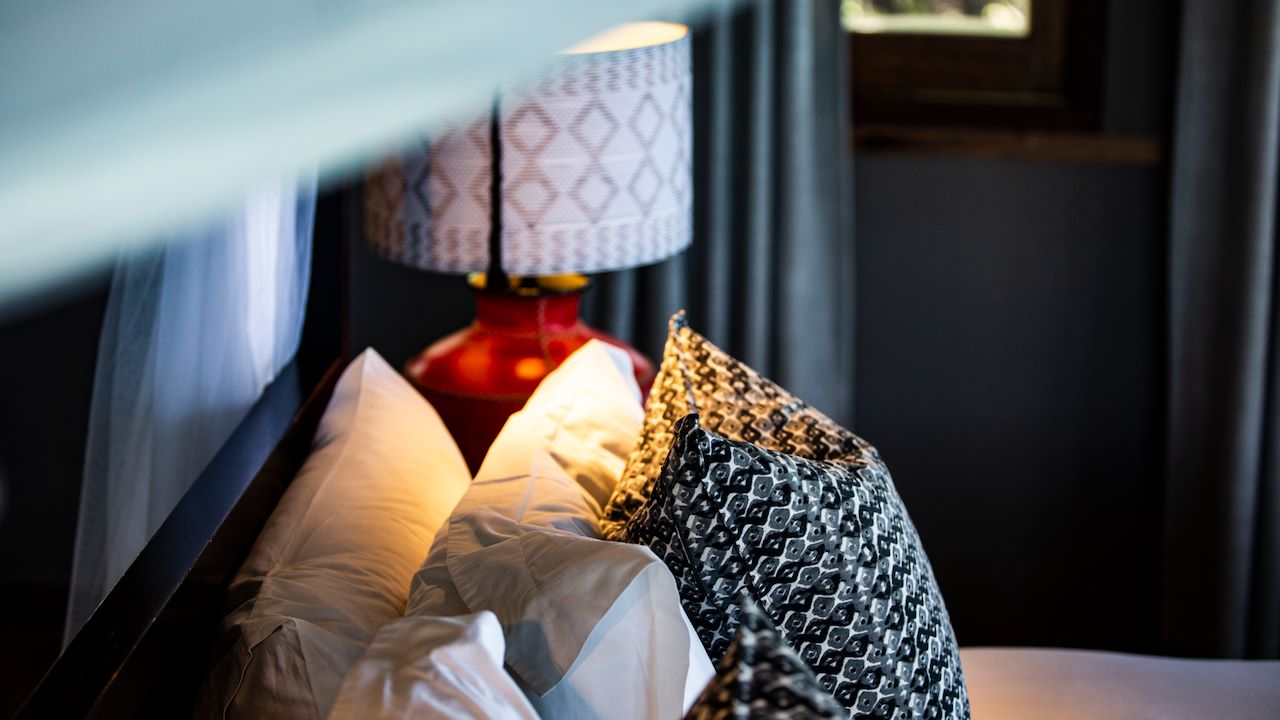



(Chris) The whole camp is on raised wooden decks for guests’ safety concerning wildlife, as well as for protection from the rising waters of the Zambezi River during high-water season. The rooms are decorated with neutral colours meant to blend in with the surroundings as well as provide a warm, homey feel. The common areas are a mixture of colours that complement the trees, as well as showcasing art pieces from Zambia and elsewhere in Africa. Of interest is the quartz which comes from the mines in northern Zambia. This is found dotted around the camp’s common area. The bar and the main breakfast area are made of local wood.

(TK) The décor is amazing and the style and setup are highly appealing to the eye, in both the main areas and the guest rooms.
What is the dining experience at Toka Leya, and some highlights on the menu?
(TK) The dining experience at Toka Leya varies as the day goes on. We cater for meat lovers, vegetarians, and any other dietary requirements. We offer buffet service for breakfast, which consists of a wide range of appetising options – from eggs cooked to order to pastries and fruits laid out on the buffet table. To add that little extra Wilderness touch, we have a daily breakfast special, the favourite being eggs benedict.

Lunch consists of an a la carte menu which guests absolutely love, as there are plenty of choices to die for. Many of our repeat guests look forward to more of our famous Toka Leya pizza, which we brag about with a lot of confidence. If a guest is not too hungry because of the big breakfast they’ve eaten, I usually recommend a light salad which pairs well with our thirst-quenching rosë wine. Dinner is a three-course table d’hote menu served in the main area with a lantern-lit atmosphere. My personal favourite dish is the marinated fillet steak, which pairs well with our reserve Jordan Merlot. After their delicious dinner, we recommend guests have a nightcap by the crackling fire on the beach sand boma area.

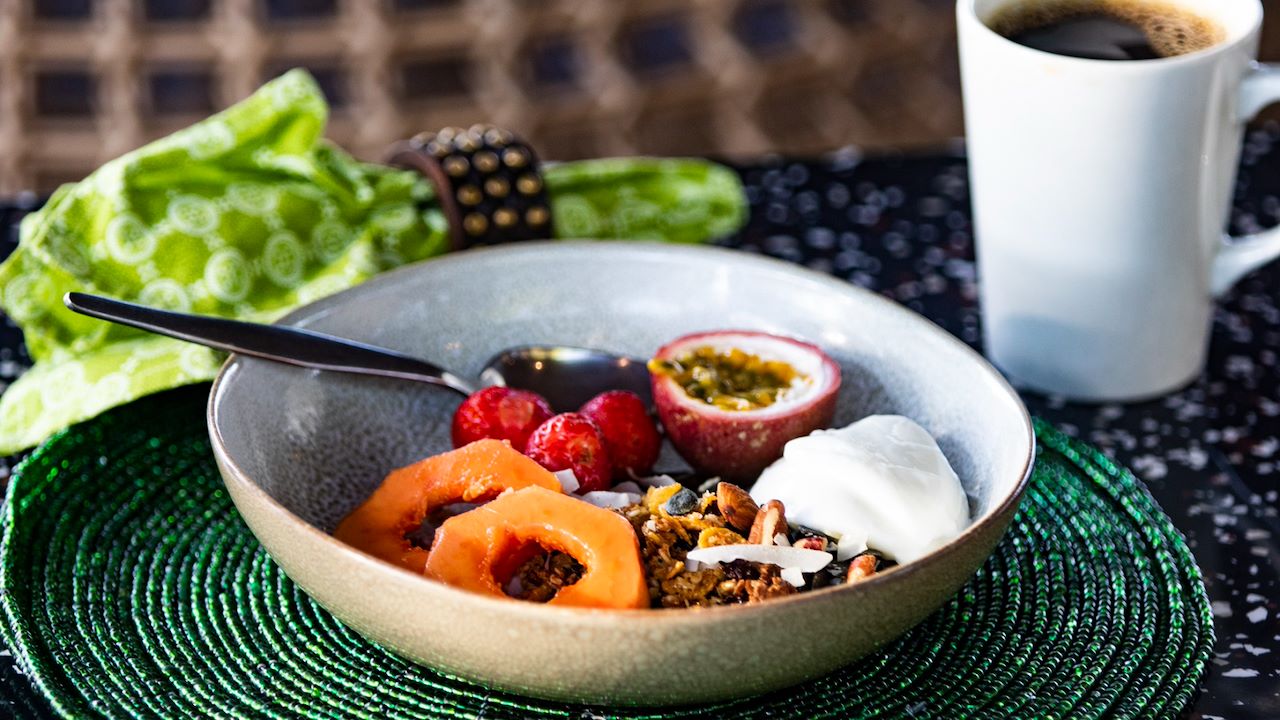
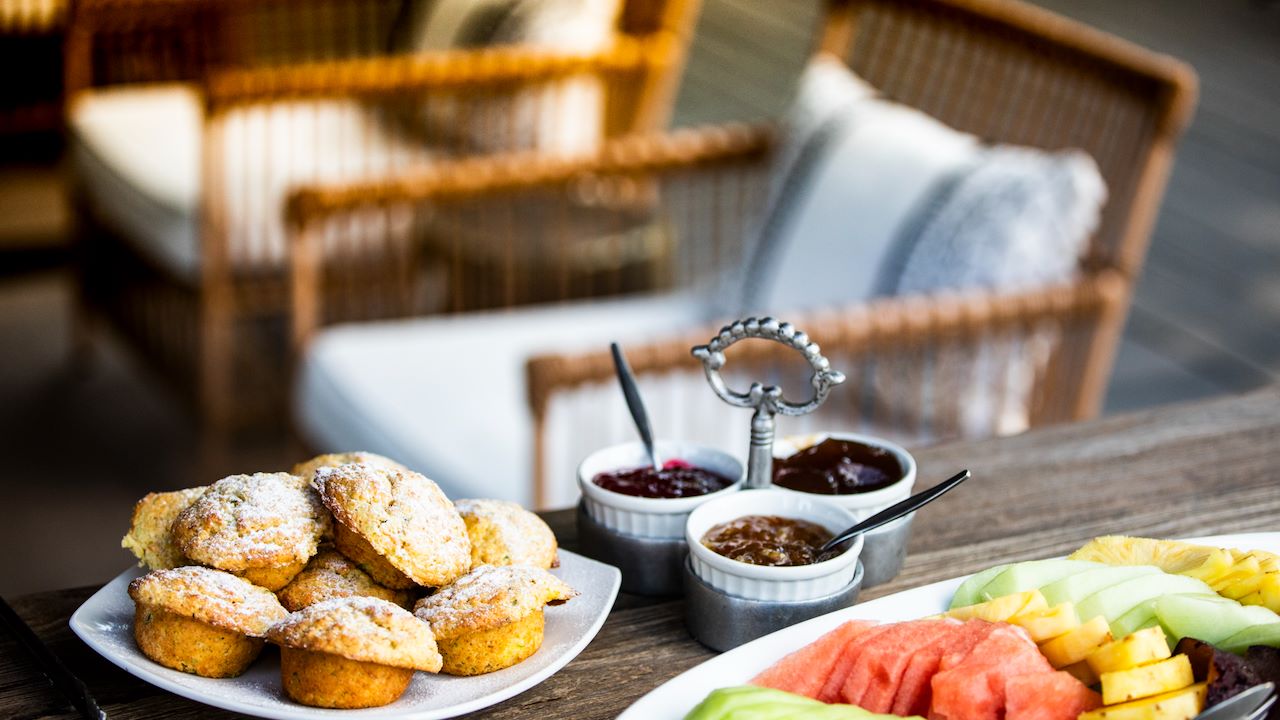


(Petros) Breakfast at Toka Leya is a buffet; otherwise the camp offers an A La Carte dining experience. Our well-trained and friendly staff makes this experience a talking point. The camp has an extensive wine list, with some offered on an all-inclusive basis as well as premier wines for guests’ account.
The Toka Leya lunch menu is quite big and guests have quite a list to choose from. The menu includes local food, vegetarian dishes, and other lighter dishes which our waiters are happy to pair with a glass of wine in our range.
The dinner menu also offers quite a selection, with a variety of meat dishes and vegetarian dishes being served every night.

(Chris) The dining experience at Toka Leya is a casual affair. Breakfast is an extensive buffet, with the hot section prepared by the chef in the guests’ full view. This allows the guests to interact with the chef and order what they want and alter their choices if they need to.
The lunch menu has a wide range of choices which also cater for vegetarian and vegan guests on request. The dinner menu changes every day and has four main course choices. While the cuisine is mainly modern/western, we also treat our guests to local food and add in local dishes for our guests to get the full Zambian experience.
We have a main dining area, but we are constantly looking for other interesting dining opportunities to offer our guests. We serve most lunches on the lower deck, close to the river. We also offer dinner and wine tasting on the sandy beach by the fire and on the gym deck. We do sundowners in the park right on the river as guests come off their afternoon activity. And we also offer breakfast on the islands in front of the camp.
The Toka Leya pizza is a most popular offering.
What makes you most proud of the camp, and working there?
(TK) What makes me most proud is knowing that we are part of a larger family all over Africa who have one mission and vision. At Toka Leya, we have also set a benchmark for surrounding camps. Compared to all the other companies I’ve ever worked for, the family work ethic at Toka Leya is second to none.
(Petros) Though I no longer work in camp every day now, I am still very much involved with the camp’s service department and with ensuring that every one of our guests gets the Toka Leya ‘wow’ experience during their stay. The one thing that I am undoubtedly really proud of at Toka Leya is the team that serves our guests, both management and junior staff. Their willingness, generosity, friendliness, kindness, attention to detail, and desire to always tailor-make guests’ experience, to keep going the extra mile for each and every guest in camp, are incredible. Our team is probably the camp’s most valuable asset.

(Chris) It is the impact that we make on our guests, how they wish they could stay longer and how they make friends with the staff and people in the village. I am also proud of the difference the camp makes to the people in the community and to the environment. For me, it is evidence of Wilderness Safaris’ journeys changing lives.
Who comprise the staff at Toka Leya? Please tell us a bit about their backgrounds, training, service, relationships with guests etc.
(Petros) The Toka Leya team is a fairly large team, with nearly 50 staff. Some of the key people on the team include Chris, our current GM. He hails from a guiding background in Zimbabwe, where he holds a professional guiding licence. Chris has worked in many management roles with safari operators in Zimbabwe as well as South Africa. He has huge experience in the tourism industry, at different times serving as Operations Manager, General Manager, and Chief Guide. Chris is assisted by Takudzwa ‘TK’ Gonese, who comes from a hotel background. After training, TK spent some time at the popular, five-star Meikles Hotel in Harare before returning to the lodge business in the Kafue National Park and then moving on to Toka Leya.

In the kitchen our head chef is Stanley Kapapa, through and through Wilderness Safaris’ own product. He joined Wilderness in Kafue with no cooking experience; he was one of the casual labourers on a building site in Kafue. Stan was picked and trained by our group food experience manager, Linda Van Rensburg, when she was still in Zambia. He’s never looked back, and today is probably one of the top chefs in the industry.
Odon Siamutete is our restaurant supervisor. He arrived at Toka Leya just after the camp opened, working as a security guard. Odon later moved into the kitchen as the scullery assistant and then into the restaurant as a waiter. When we introduced the waiters’ training, Odon took advantage of this and ran with it. He now heads up a team of eight other waiters.
Steven Phiri is the front of house manager, probably the person with the most ongoing interaction with our guests. It falls largely on his shoulders to ensure that guests’ stay and the booking of any external activities run smoothly. Steve works closely with our senior guide Godfrey Mungala, also trained in-house and rising through the ranks. Godfrey works with an amazing team of knowledgeable and vibrant guides to make sure that guests get the most out of their experiences at Toka Leya.

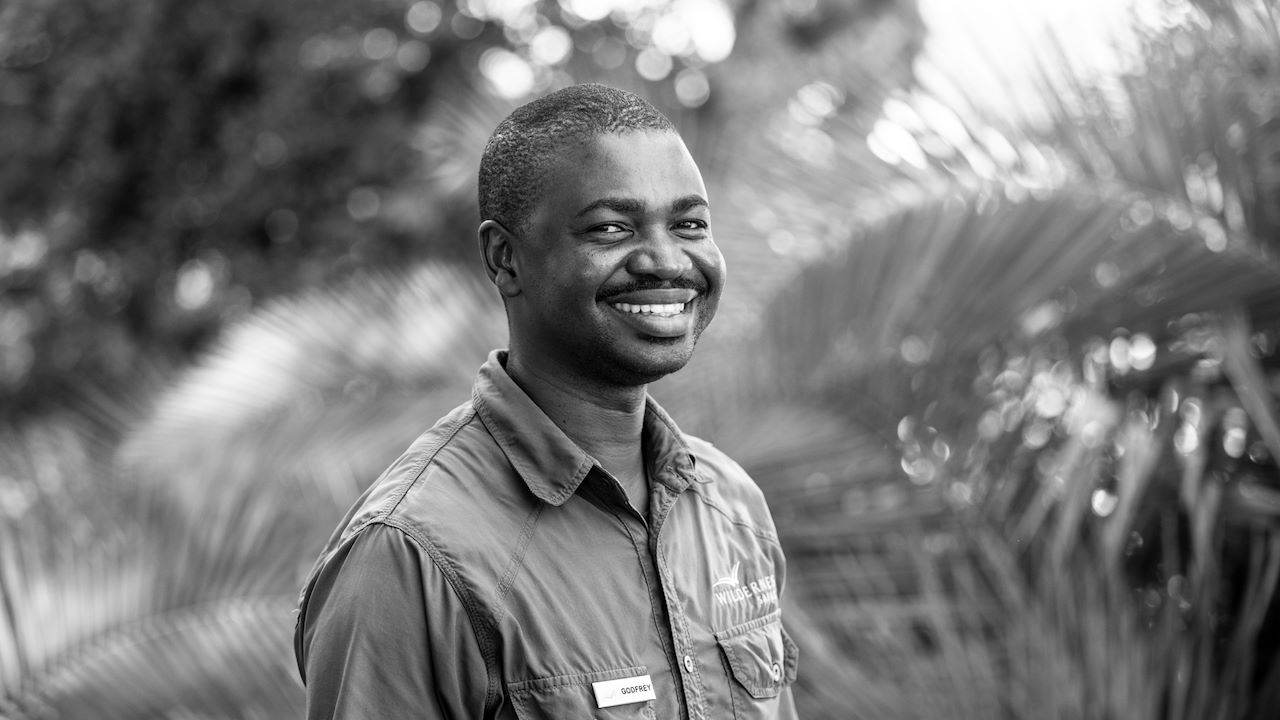
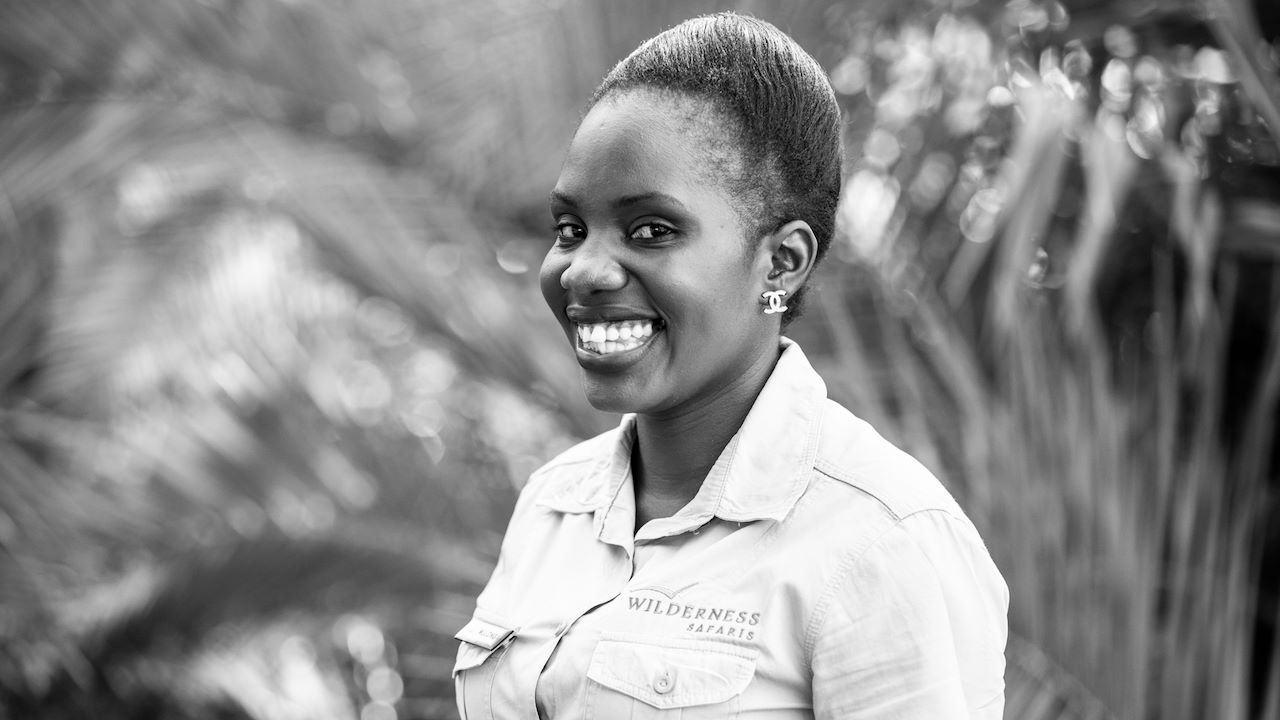
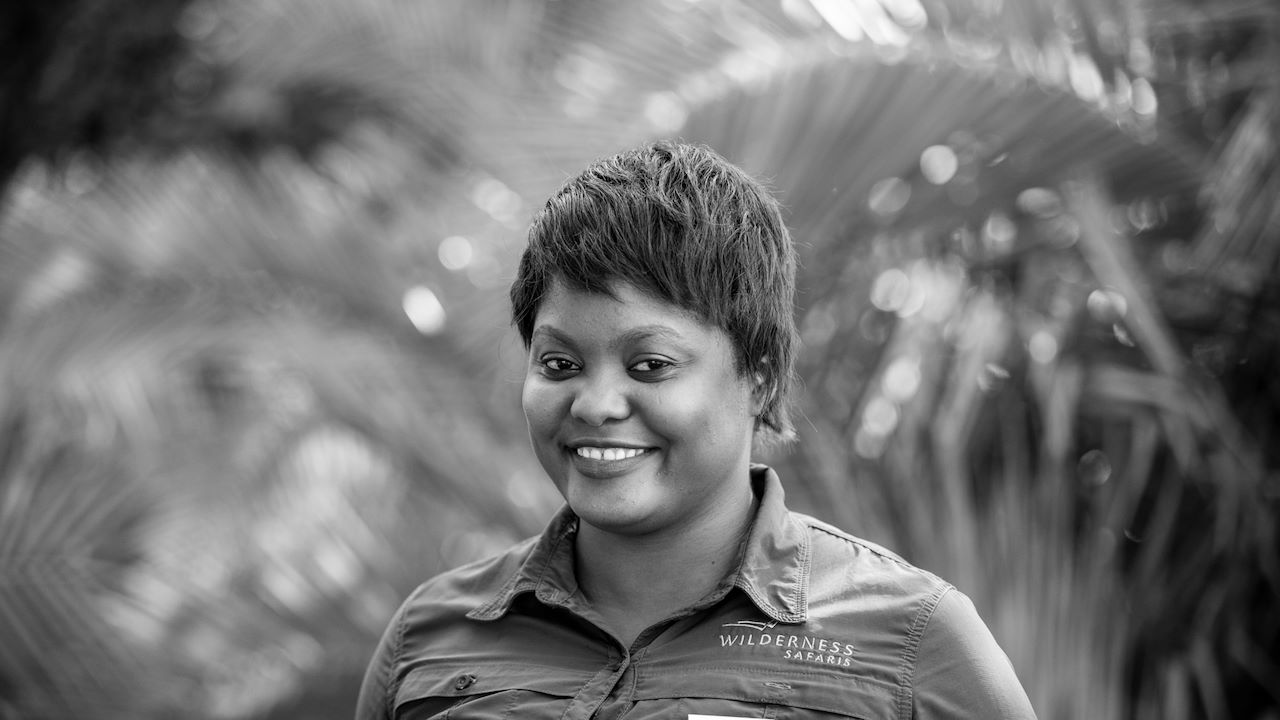



What feelings/impressions would you most like guests to take away with them?
(Petros) When most guests leave Toka Leya, either to move on to another camp or to return home, it is evident that they feel like they are leaving a part of their family behind. It is really fulfilling for the whole team, and probably the reason that our staff is always going all the way to deliver a memorable stay to everyone.
(Chris) I would like guests to feel that they stayed with and were treated like family.
(TK) I would love for guests to leave with a sense of belonging to the Wilderness Safaris family. They should feel like they have left a piece of their heart with each camp they stay at.

Written by Melissa Siebert
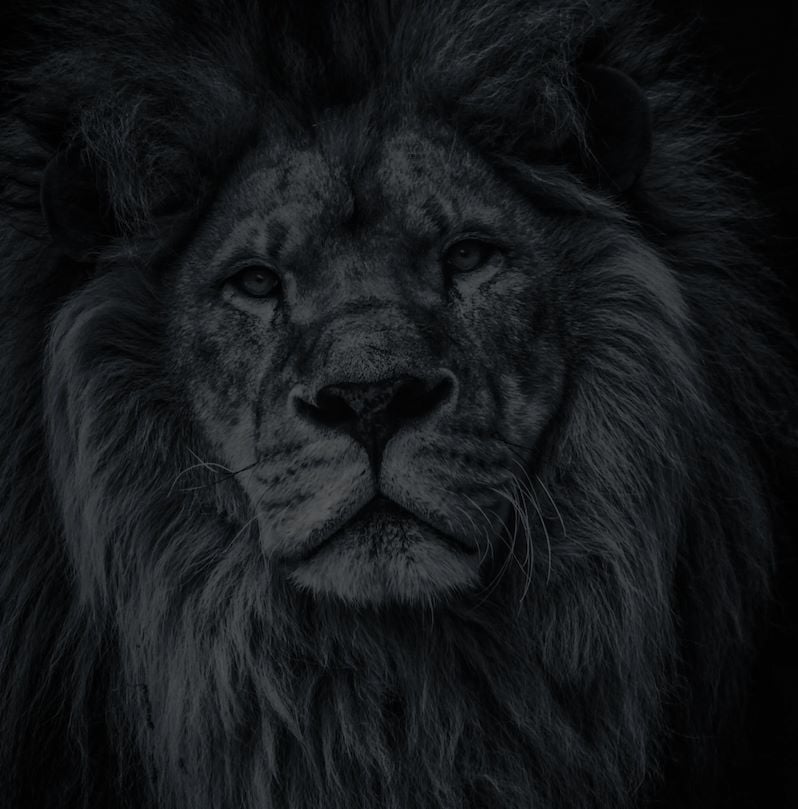
Let’s plan your next journey
Ready?
When we say we’re there every step of the way, we mean it, literally. From planning the perfect circuit, to private inter-camp transfers on Wilderness Air, and easing you through Customs. We’re with you on the ground, at your side, 24-7, from start to finish. Ready to take the road less travelled? Contact our Travel Designers to plan an unforgettable journey.